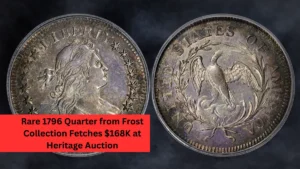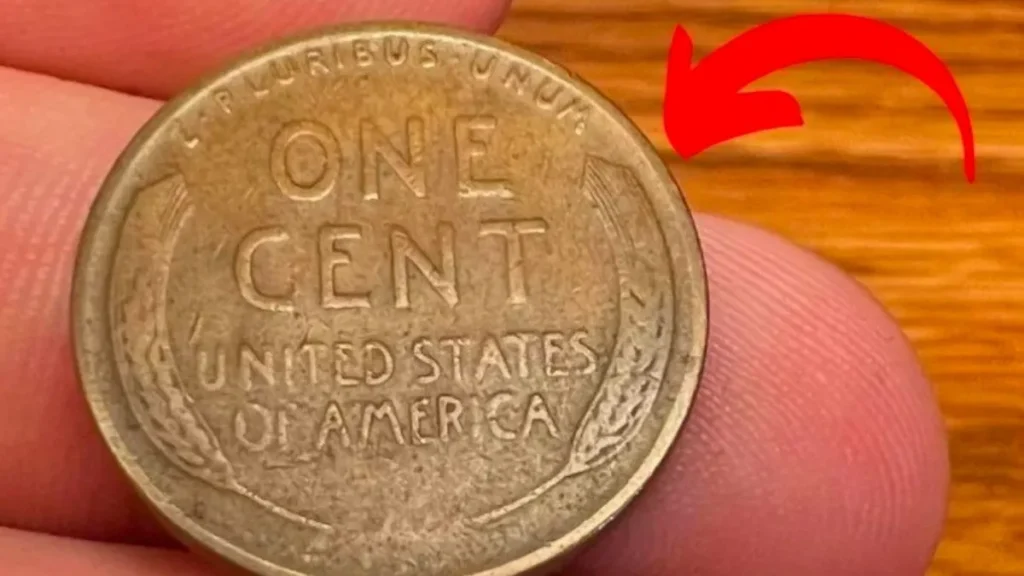A Condition Census 1796 Quarter Dollar, B-1, MS61 PCGS Sells for $168,000 at Heritage Auction
A 1796 Quarter Dollar graded MS61 by PCGS and from the Frost Collection brought in $168,000, topping Heritage Auctions’ U.S. Coins Signature Sale held April 3-6, which totaled $6,826,524 in sales.
This particular 1796 quarter represents the scarcer B-1 die variety, making it more desirable among collectors.
“This remarkable coin hails from a limited mintage, and Mint State survivors are exceptionally rare,” said Todd Imhof, Executive Vice President at Heritage Auctions. “The B-1 is even less commonly seen than the B-2, and this piece ranks among the finest six known examples.”
1915 Indian Eagle PR66 NGC Reaches $117,000
A 1915 Indian Head Eagle graded PR66 by NGC realized $117,000. This coin is one of only 75 Proof specimens struck by the Philadelphia Mint that year. John Dannreuther estimates 40–45 pieces remain, but NGC and PCGS combined have certified just 38—many of which may include regrades and crossovers. Some of the known examples are housed in institutional collections like the Smithsonian, reducing the number accessible to collectors.
1912 Indian Eagle PR66 NGC Achieves $111,000
Another standout result was a 1912 Indian Eagle, also graded PR66 by NGC, which brought in $111,000. Although the Philadelphia Mint struck 144 Proofs that year, only 83 were sold due to waning collector interest in the sandblast finish used at the time. The rest were melted. This particular coin is one of just 60–70 survivors and one of nine graded PR66, with only five graded higher.
1929 Saint-Gaudens Double Eagle MS65 PCGS Sells for $93,000
A 1929 Saint-Gaudens $20 Double Eagle, graded MS65 by PCGS, sold for $93,000. Though over 1.7 million of these coins were minted, the 1929 issue is considered scarce, marking the beginning of the end of the series that ran from 1907 to 1933. PCGS estimates about 1,000 still exist, but Heritage believes the true number is closer to 350–400.
1795 Flowing Hair Dollar AU58 PCGS CAC Commands $90,000
A highly desirable early American silver dollar—a 1795 Flowing Hair, Three Leaves, B-6, BB-25, R.3 Dollar graded AU58 by PCGS with CAC approval—earned $90,000. Coins of this era approaching Uncirculated condition are in high demand, as shown by the 40 bids placed for this nearly Mint State example. Another similar piece, a B-5, BB-27 Dollar also graded AU58 PCGS CAC, closed at $81,000.
1895 Morgan Dollar PR64 PCGS Sells for $81,000
An 1895 Morgan Dollar in PR64 PCGS fetched $81,000. No circulation strikes from 1895 are known to survive, even though Mint records list 12,000 standard silver dollars struck in June of that year. It is widely believed that any circulation coins were melted down as part of the Pittman Act of 1918, leaving only Proof examples in existence today.
Blake & Co. Mixed Metal Ingot from 1870 Brings $58,800
A rare 4.10-ounce Blake & Co. mixed metal presentation ingot, dated July 1870 and produced in Silver City, Idaho Territory, sold for an impressive $58,800 after 42 competitive bids. The face of the ingot shows detailed assay markings, listing both gold and silver content, while the reverse is stamped “A.C. / JULY / 1870.” Only ten such mixed-metal ingots from Blake & Co. in Owyhee County are known, including one stolen from the 2007 Ford sale.
FAQs
Q1: Why is the 1796 B-1 Quarter Dollar so valuable?
The 1796 B-1 Quarter Dollar is rare due to its low mintage and the limited number of surviving Mint State examples. The B-1 variety is especially scarce compared to the B-2.
Q2: What makes Proof Indian Eagles from 1912 and 1915 special?
Both years had limited production, and most of the unsold coins were melted. Their unique sandblast finish and small surviving population make them highly collectible.
Q3: Why are 1929 Saint-Gaudens Double Eagles considered rare?
Although over 1.7 million were minted, few were released before gold coinage was halted. Most were melted, leaving a small number of surviving coins today.
Q4: What is unique about Blake & Co. mixed metal ingots?
These ingots were produced in the Idaho Territory in 1870 and contain both gold and silver. Only a handful are known, making them highly sought after by collectors.



